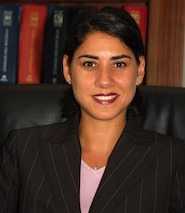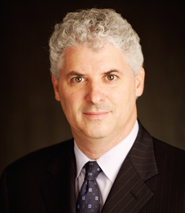Congratulations to our Managing Partner Ben Rubinowitz for receiving the Robert Keeton Award for Outstanding Service as a NITA Faculty Member
 GGCSMB&R is proud to announce that our Managing Partner New York Personal Injury Attorney Ben Rubinowitz was the 2013 recipient of the Robert Keeton Award for Outstanding Service as a National Institute for Trial Advocay (NITA) Faculty Member. This award recognizes Ben’s exceptional work as a NITA faculty member. Here is what NITA has to say about Ben: “In considering his nomination, it was recognized that “Ben is a ‘best’ teacher and deserves the best teacher award.” He began teaching early in his career, and has contributed to new and evolving methods, such as “drills” and the drill room. He lectures in the same persona that he presents to a jury-a consummate role model.”
GGCSMB&R is proud to announce that our Managing Partner New York Personal Injury Attorney Ben Rubinowitz was the 2013 recipient of the Robert Keeton Award for Outstanding Service as a National Institute for Trial Advocay (NITA) Faculty Member. This award recognizes Ben’s exceptional work as a NITA faculty member. Here is what NITA has to say about Ben: “In considering his nomination, it was recognized that “Ben is a ‘best’ teacher and deserves the best teacher award.” He began teaching early in his career, and has contributed to new and evolving methods, such as “drills” and the drill room. He lectures in the same persona that he presents to a jury-a consummate role model.”
The National Institute for Trial Advocacy (NITA) is the nation’s leading provider of legal advocacy skills training. It is a deidcated team of professors, judges and practicing lawyers who believe that skilled and ethical advocacy is a critical component of legal professionalism and all systems of dispute resolution that seek justice
Below is a video demonstrating Ben’s skills as a NITA teacher
 New York Personal Injury Attorneys Blog
New York Personal Injury Attorneys Blog


 GGCSMB&R is pleased to announce that Marijo C. Adimey has joined our firm. Marijo began her legal career as an Assistant District Attorney in Bronx County, NY. For five years she prosecuted cases on behalf of numerous Bronx residents who were the victims of horrific crimes. This initial experience where she tried dozens of cases to verdict laid the ground work for her outstanding career as a trial lawyer. Following her tenure at the Bronx DA’s office, Marijo transitioned to the civil representation of victims of medical malpractice and serious personal injury. She is recognized as an up and coming star in the area of plaintiff’s medical malpractice. She was designated a
GGCSMB&R is pleased to announce that Marijo C. Adimey has joined our firm. Marijo began her legal career as an Assistant District Attorney in Bronx County, NY. For five years she prosecuted cases on behalf of numerous Bronx residents who were the victims of horrific crimes. This initial experience where she tried dozens of cases to verdict laid the ground work for her outstanding career as a trial lawyer. Following her tenure at the Bronx DA’s office, Marijo transitioned to the civil representation of victims of medical malpractice and serious personal injury. She is recognized as an up and coming star in the area of plaintiff’s medical malpractice. She was designated a  In their latest Trial Advocacy Column, New York Personal Injury Lawyers
In their latest Trial Advocacy Column, New York Personal Injury Lawyers  In their Trial Advocacy column, New York Personal Injury Attorneys
In their Trial Advocacy column, New York Personal Injury Attorneys  Our partner,
Our partner,  Our partner, New York Medical Malpractice Lawyer
Our partner, New York Medical Malpractice Lawyer  In their Trial Advocacy column, New York Personal Injury Lawyers
In their Trial Advocacy column, New York Personal Injury Lawyers  New York Construction Accident Attorneys
New York Construction Accident Attorneys 